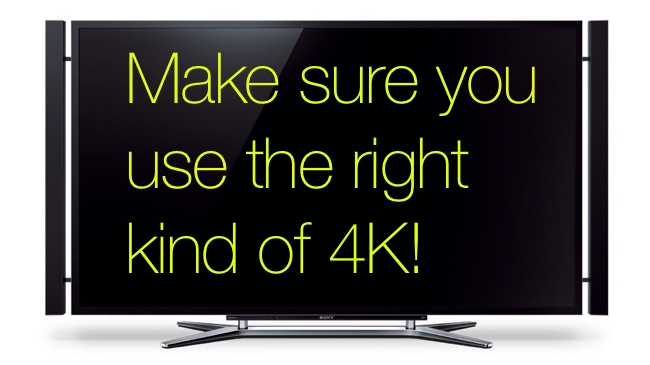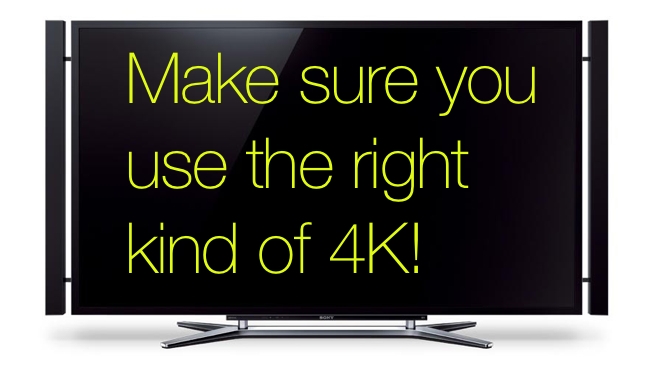
 The right kind of 4K
The right kind of 4K
Many of us are in the process of getting to grips with 4K. There can be some unexpected pitfalls!
I just wanted to mention one that I came across recently when trying out a Panasonic GH4 - the new 4K-capable camera.
Most people treat the term "4K" pretty generically. According to Wikipedia: "4K resolution is a generic term for display devices or content having horizontal resolution on the order of 4,000 pixels.". While Wikipedia is not always correct, that's certainly how we use "4K" around here.
But at times, you absolutely do have to be specific.
While we were preparing for our in-depth article on the GH4, we saw that some of the footage wouldn't play back on a Dell 4K monitor. Strange, you might think, but the reason was that two types of 4K were involved.
The footage itself was recorded as "True" 4K: 4096 x 2160 pixels, but the screen, which was UHD resolution, had a maximum resolution of slightly less than this horizontally: 3840 x 2160 pixels. And it wouldn't play!

We had the camera connected directly to the computer monitor, but there was no downscaling available either in the camera or the monitor (the camera can downscale from 4K to HD, but not from 4096 x 2160 to 3840 x 2160. The result was a blank screen.
If we'd been trying to play back the camera's video from a computer, the chances are that whatever media player had been used would have rescaled. This would not be ideal either, because you can only get maximum sharpness by having a one-to-one relationship between the pixels in the image and the display. Without this close relationship the image, while still very sharp, will be softer.
The latter is what happens when I play 4K footage I made when I reviewed the Canon 1DC on the Dell 4K monitor that I'm using at the moment. It's an astonishingly good display (a 32" IPS 4K screen) but it is only 3840 x 2160: a perfectly acceptable resolution (and the same as UHD TVs), but this does all make the point that unless your footage is going to be shown in a DCI-equipped cinema, you might as well capture it as UHD at 3840 x 2160.
One thing you can do if you've made this "mistake" is crop your 4096 x 2160 material to 3840 x 2160. Purists will probably wince when I say this, but, if you do crop it, you'll hardly notice the difference.
Tags: Production


Comments